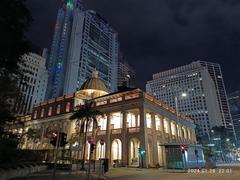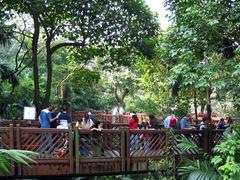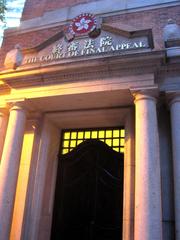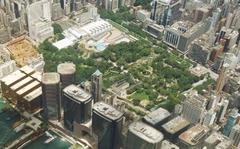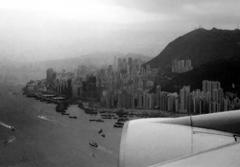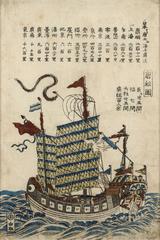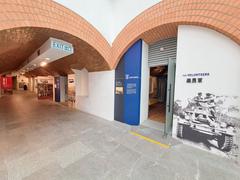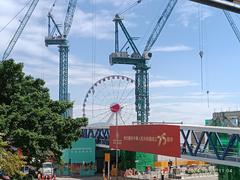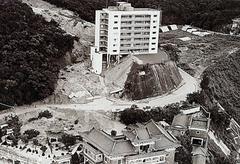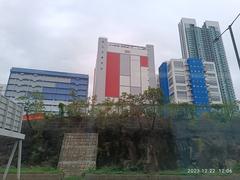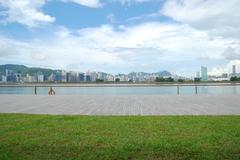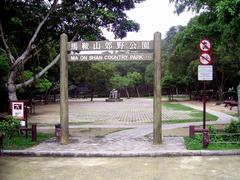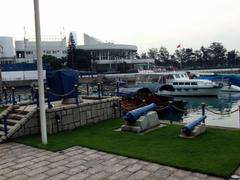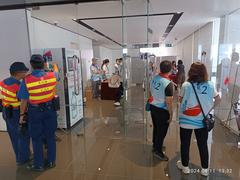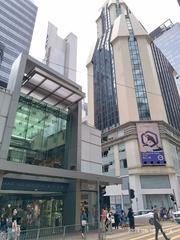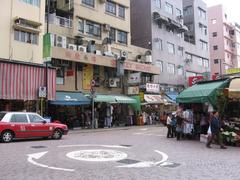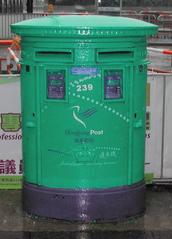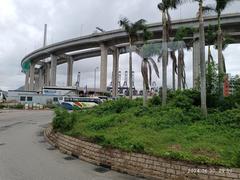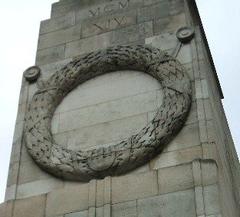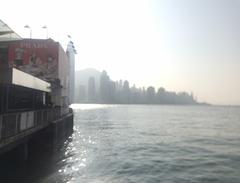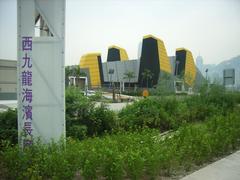
Lo Pan Temple Visiting Hours, Tickets, and Historical Significance in Hong Kong
Date: 04/07/2025
Introduction
Lo Pan Temple, nestled in Kennedy Town on Hong Kong Island, is a unique cultural and architectural landmark dedicated exclusively to Lo Pan, the patron saint of builders and carpenters. Established in 1884 by Hong Kong’s construction community, this temple not only pays homage to a legendary figure from China’s Spring and Autumn Period but also serves as a living testament to the spirit of craftsmanship, ingenuity, and community that shaped Hong Kong’s development. Its distinctive stepped gable walls, intricate Shiwan ceramic figurines, and rich murals make it a must-see for history enthusiasts, architecture aficionados, and cultural explorers (Zolima CityMag, Discover Hong Kong, Time Out Hong Kong).
This comprehensive guide covers Lo Pan Temple’s history, architectural features, visiting hours, ticketing, accessibility, guided tours, tips for visitors, nearby attractions, and cultural significance.
Table of Contents
- Introduction
- Origins of Lo Pan and His Legacy
- Establishment and History of Lo Pan Temple
- Architectural Features and Decorative Arts
- Symbolism and Community Role
- Visiting Hours, Tickets, and Accessibility
- Guided Tours, Festivals, and Visitor Etiquette
- Getting to Lo Pan Temple
- Nearby Attractions
- Frequently Asked Questions (FAQ)
- Preservation and Contemporary Relevance
- Conclusion and Visitor Tips
- References
Origins of Lo Pan and His Legacy
Lo Pan (Lu Ban, 魯班), originally known as Gongshu Ban, was a legendary Chinese craftsman, inventor, and philosopher from the Spring and Autumn Period (770–476 BCE). Revered as the patron saint of builders and carpenters, Lo Pan is credited in folklore with inventing essential tools like the saw and the lock. His legacy represents ingenuity, technical mastery, and moral virtue—qualities that continue to inspire Hong Kong’s construction industry (Zolima CityMag).
Establishment and History of Lo Pan Temple
Lo Pan Temple at 15 Ching Lin Terrace, Kennedy Town, is the only temple in Hong Kong dedicated solely to Lo Pan (Discover Hong Kong). Built in 1884 by the Contractors Guild with donations from over 1,100 craftsmen, it became a focal point for the city’s construction community. Since 1921, the Kwong Yuet Tong, a builders’ association, has managed the temple and organized annual rituals, fostering solidarity and preserving traditional crafts (WeekendHK).
Architectural Features and Decorative Arts
Layout and Structure
Lo Pan Temple occupies a prominent position on one of Kennedy Town’s historic terraces. The temple follows a classic two-hall, one-courtyard design, with a main altar dedicated to Lo Pan and other deities such as the God of Wealth. The compact site, accessed via steps and a sloping path, utilizes the natural topography for both aesthetic and symbolic effect (AAB Heritage Appraisal).
Stepped Gable Walls: “Five Peaks Paying Tribute to Heaven”
A distinctive hallmark of the temple is its stepped gable walls, known as the “Five Peaks Paying Tribute to Heaven” (五岳朝天式). These rare, jagged gables frame the temple in black and white, drawing the eye skyward and symbolizing reverence and aspiration—a unique feature in Hong Kong (The Temple Trail).
Roof and Ridge Decorations
The temple’s roof is adorned with elaborate Shiwan ceramic figurines and ridge decorations, crafted by artisans from Foshan, Guangdong. The entrance ridge is crowned with a pearl, dragon fish, and phoenixes, symbolizing prosperity and protection. Unlike most local temples, Lo Pan Temple’s roof ridges are decorated on both front and rear, a mark of prestige and community pride (AMO News).
Shiwan Ceramics, Carvings, and Murals
- Shiwan Ceramic Figurines: These vibrant, detailed figurines on the roof depict scenes from “Investiture of the Gods” (封神榜), integrating mythological storytelling with religious symbolism (AMO News).
- Plaster Mouldings and Wood Carvings: Masterpieces of craftsmanship are found throughout the temple, including floral motifs, dragons, and phoenixes, reinforcing the temple’s spiritual purpose and its role as a museum of building arts (AMO Historic Buildings).
- Wall Paintings and Murals: The temple boasts one of the largest collections of wall paintings among Hong Kong’s temples, illustrating historical and mythological scenes, plants, animals, and allegories of virtue (HelloTravel, Blue Lapis Road).
- Clay Sculptures and Stone Inscriptions: Intricate clay figures and Qing dynasty stone carvings, including poems and dedications, further enrich the site’s heritage (Wikipedia).
Symbolism and Community Role
Every architectural and decorative element at Lo Pan Temple is steeped in symbolism. The upward gables represent China’s five sacred mountains, while dragons and phoenixes invoke spiritual protection and prosperity. Beyond its artistic merit, the temple has historically served as a meeting place for guilds, a hub for mutual aid, and a site for dispute resolution among artisans (AMO Historic Buildings).
Visiting Hours, Tickets, and Accessibility
- Opening Hours: Lo Pan Temple is generally open daily from 9:00 AM to 5:00 PM (Trip.com). During festivals or for maintenance, times may vary—check official sources before your visit.
- Admission: Entry is free; donations for temple upkeep are appreciated.
- Accessibility: The temple sits on a terraced slope with steps at the entrance. While there are no wheelchair ramps, assistance may be arranged—contact the temple or Antiquities and Monuments Office in advance if needed (GoHK).
Guided Tours, Festivals, and Visitor Etiquette
Guided Tours
- Public Tours: Free guided tours are often available in Cantonese, with occasional sessions in English or Mandarin. Book in advance, especially for English-language or group tours (Antiquities and Monuments Office).
- Special Events: Exhibitions and themed tours, such as those focusing on architectural features or the “Investiture of the Gods” ridge, are held periodically (AMO News).
Lo Pan Festival
Held annually on the 13th day of the sixth lunar month (July or August), this festival is the highlight of the temple’s calendar. Rituals, lion dances, performances, and communal banquets attract both worshippers and tourists, celebrating the heritage of the construction community (WeekendHK).
Visitor Etiquette
- Dress Modestly: Cover shoulders and knees.
- Photography: Permitted in exterior and courtyard areas; avoid flash and respect signs in main halls.
- Behavior: Maintain a quiet, respectful demeanor. Do not smoke, eat, or drink inside the temple.
Getting to Lo Pan Temple
- By MTR: Kennedy Town Station (Island Line), Exit C. Walk about 10 minutes along Belcher’s Street, then ascend Ching Lin Terrace.
- By Bus: Routes 5B, 10, 101, and 104 serve Kennedy Town. Follow signage to Ching Lin Terrace.
- By Taxi: Taxis cannot access the terrace directly. Alight on Belcher’s Street and walk up.
- Route Planning: Use HKeMobility for real-time directions and transport updates (GoHK).
Accessibility Note
The approach involves stairs and a sloped path. Wheelchair users or those with limited mobility should contact the temple or tourism authorities for the latest accessibility information.
Nearby Attractions
- Belcher Bay Promenade: Scenic waterfront park, ideal for walks and photography.
- Sai Wan Swimming Shed: Historic wooden pier, popular for sunset views.
- Man Mo Temple: Another key heritage site nearby.
- Kennedy Town Cafés and Markets: Enjoy the area’s vibrant food scene and local markets.
Frequently Asked Questions (FAQ)
Q: What are Lo Pan Temple’s visiting hours?
A: Open daily from 9:00 AM to 5:00 PM; check ahead for special schedules.
Q: Is there an entrance fee?
A: No, admission is free.
Q: Are guided tours available?
A: Free tours in Cantonese; English/Mandarin tours by arrangement.
Q: Is the temple wheelchair accessible?
A: Limited due to stairs and slopes; contact staff for assistance.
Q: When is the Lo Pan Festival?
A: 13th day of the sixth lunar month (usually July or August).
Q: Can I take photos inside?
A: Photography is allowed in courtyards; restrictions may apply inside main halls.
Preservation and Contemporary Relevance
Lo Pan Temple is a declared monument and Grade I historic building, safeguarded by ongoing conservation and restoration efforts (AMO Historic Buildings). Educational programs, festivals, and community involvement ensure it remains a vibrant heritage site, fostering appreciation for traditional crafts and religious customs.
Conclusion and Visitor Tips
Lo Pan Temple remains a striking emblem of Hong Kong’s architectural, cultural, and religious heritage. Its rare stepped gable walls, ornate ceramic figurines, and extensive murals offer an immersive exploration of Chinese craftsmanship and symbolism. With free daily access, a convenient Kennedy Town location, and the vibrant annual Lo Pan Festival, it is an essential stop for those seeking to understand Hong Kong’s history and community spirit.
Tips for Visitors:
- Check current visiting hours and special event schedules.
- Consider joining a guided tour for deeper insight.
- Pair your visit with other Kennedy Town attractions for a rich cultural experience.
- Dress respectfully and be mindful of worshippers and rituals.
Download the Audiala mobile app for detailed travel guides and heritage updates, and follow us on social media for the latest news on Hong Kong’s historical sites.
References
- Zolima CityMag
- Discover Hong Kong
- Antiquities and Monuments Office
- Time Out Hong Kong
- GoHK
- WeekendHK
- IGI Global
- AAB Heritage Appraisal
- The Temple Trail
- AMO News
- HelloTravel
- Blue Lapis Road
- Wikipedia



